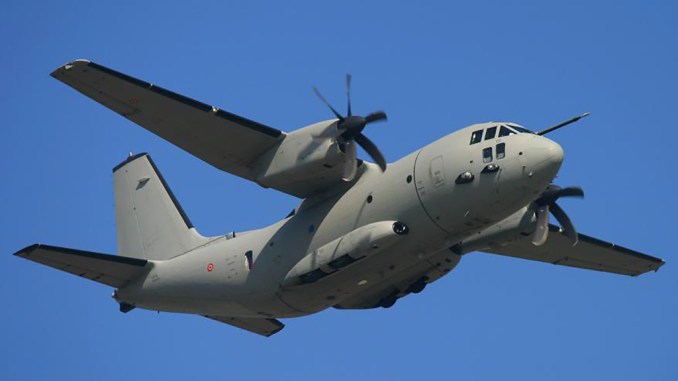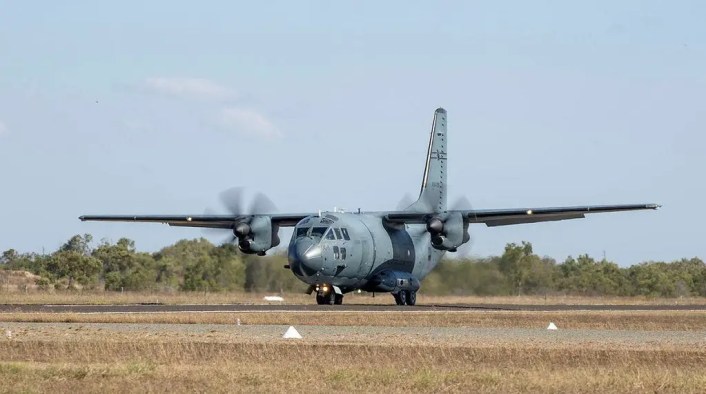
No signs of structural fatigue on the Italian Air Force C-27J airlifters.
“The checks required by the service bulletin have already been carried out on the Italian C-27J Spartan fleet and no issues have been found”. This is the official response we received by the Italian Air Force after we asked the service, one of the world’s largest and most experienced Spartan operators, and certainly one of those flying the most different types of missions (from the “normal” tactical airlift mission, to the Special Forces support, to the Electronic Warfare using the EC-27J variant), whether their C-27Js were affected by the same issues reported in the U.S. and Australia media.
In fact, a Forbes report published on Dec. 6, 2023, stated that all 14 HC-27J Spartan aircraft flown by the U.S. Coast Guard have been grounded after cracks of varying degrees were found in their aircraft following an Alert Service Bulletin issued by Leonardo that directed users to inspect for cracks in the upper rear of the aircraft. Similar cracks were found also in Australia on an undisclosed number of the ten C-27J Spartan operated by the Royal Australian Air Force.

The dissemination of similar bulletins is part of the usual procedures that are normally used by the manufacturer of aircraft, engine and systems to guarantee the safety of the flight operations and they usually don’t make the news, unless they cause a long grounding.
In this case, it’s not clear how long the U.S. and Australian C-27Js will need to remain grounded, although the official statement released by Leonardo suggests the fix is ready and can be implemented quite rapidly.
“In response to an issue reported by a C-27J Operator, as a preventive measure, Leonardo has requested all C-27J Users to perform a one-time inspection,” the company said. “In order to mitigate any impacts on aircraft operations, Leonardo has already identified a repair solution in case an issue is actually detected. The implementation of such repair can be performed at customer premises by the Operators and does not require significant effort. The reported issue is therefore not expected to affect planned aircraft operations.”
News coming from Greece seems to confirm the repair can be quickly implemented. Notified about the bulletin on Tuesday, the Hellenic Air Force has already started the inspection of its Spartan fleet. According to the Greek Kathimerini media outlet, one of the eight Greek C-27Js has already completed the technical inspection and repair proposed by the manufacturer, with the work being carried out at the State Aircraft Factory (KEA). “In fact, the plane was immediately put into operational use and flew on Tuesday to airlift a patient”.
Ήδη σε ένα από τα ελληνικά C-27 εφαρμόστηκε η λύση που προτείνει ο κατασκευαστής. Θα προηγηθούν τα λειτουργικά αεροπλάνα και στη συνέχεια τα καθηλωμένα. https://t.co/2iunZzAsey
— Stavros Ioannidis (@st_ioannidis) December 7, 2023
According to the Forbes story, none of the Operations Command C-27Js were grounded and “don’t show signs of cracking at the points of emphasis.”
US Army C-27J Spartan #AE4CF9 as SANTA01 spreading some Christmas cheer over Fort Bragg this morning. pic.twitter.com/CbJEZ7SAKz
— TheIntelFrog (@TheIntelFrog) December 6, 2023
The status of the remaining international operators (13 out of a total of 17) is unknown at the time of writing.

The demand of advanced, high-maneuverable, tactical airlift assets is very high and this kind of aircraft is constantly operated from short and austere runways, in the most challenging conditions. Structural fatigue is among the things that needs to be monitored and in some cases, the heavy toll, of high optempo. As proved by the safety stand-down of more than 120 U.S. C-130H and J aircraft after atypical cracks were found in the wing joints of at least two planes in 2019, or last year’s grounding of more than 20% of the USAF C-130H fleet for cracks on the propeller blades.
“The robust C-27J has a use case. But while the Spartan is cheaper to operate and can, in Pacific or Caribbean backwaters, fit into more places than the Coast Guard’s far-larger C-130s, each fleet-wide grounding poses an ever-greater existential threat to the Spartan,” the Forbes article says. “If the this latest operational setback devolves into a long-term operational pause, the incident may well prove to be the final straw in the Coast Guard’s long-troubled C-27J program, pushing the agency to, at a minimum, explore other options for maritime surveillance and tactical transport.”
The length of the grounding and its eventual impact on the reputation of the C-27J in the U.S. Coast Guard will need to be reassessed in the near future. What’s already certain is that the service has recently started testing the missionized configuration of the HC-27J working with the Naval Air Systems Command’s Naval Air Warfare Center Aircraft Division AIRWorks Team and Leonardo to enhance its surveillance aircraft fleet with improved capabilities to gather, process and transmit information during maritime patrol aircraft joint operations.
An interesting video about the testing carried out by the the NAWCAD’s Air Test and Evaluation Squadron (VX) 20 HC-27J test team was posted on Instagram.
- SEO Powered Content & PR Distribution. Get Amplified Today.
- PlatoData.Network Vertical Generative Ai. Empower Yourself. Access Here.
- PlatoAiStream. Web3 Intelligence. Knowledge Amplified. Access Here.
- PlatoESG. Carbon, CleanTech, Energy, Environment, Solar, Waste Management. Access Here.
- PlatoHealth. Biotech and Clinical Trials Intelligence. Access Here.
- Source: https://theaviationist.com/2023/12/08/no-cracks-reported-on-italian-air-force-c-27j-spartan-fleet/?utm_source=rss&utm_medium=rss&utm_campaign=no-cracks-reported-on-italian-air-force-c-27j-spartan-fleet




